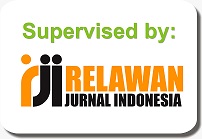POLA KOMUNIKASI KELOMPOK INFORMASI MASYARAKAT (KIM) PRIGEN PASURUAN DALAM PENYEBARAN INFORMASI KE MASYARAKAT
Abstract
The existence of the community information group (Kelompok Informasi Masyarakat/ KIM) plays the strategic role in establishing the human resources. Furthermore, this community holds its capacity as both the social community and non-formal organization, oftentimes doing a direct interaction with the people. This scrutiny is to analyze the patterns of communication run by the community information group in Lumbangrejo, Jatiarjo and Tretes villages, which are parts of the Prigen sub-district, Pasuruan Regency, East Java.
This qualitative research is set out through a descriptive case study method, which is through investigating the real-life contexts phenomena, by taking advantage of various resources. The type of this study is a descriptive, that only describes or shows the cases in more depth. The outcome of this probe is to reveal the communication patterns of the community information group above in undertaking its role as the disseminators of information, technology, and innovation to the public.
The conclusion of this analysis figures that patterns of communication applied in the community information group of Prigen Subdistrict, Pasuruan Regency, are the combinations amid interpersonal communication, utilization of technology and two ways communication. Nonetheless, as the part of opinion leaders, this community yet needs to strengthen its human resources in the form of transformation of both expertise and automation, whether it is supported by the government, universities, and NGOs. Thus, performance can be significantly optimal.
Keywords
Full Text:
PDFReferences
Alwasilah, A Chedar. (2015). Pokoknya Studi Kasus. Bandung. PT. Kiblat Buku Utama.
Bungin, Burhan. (2016). Sosiologi Komunikasi. Teori, Paradigma, dan Diskursus Teknologi Komunikasi di Masyarakat. Jakarta. Prenada Media Group.
Creswell, Jhon W. (2010). Research Design: Pendekatan Kualitatif, Kuantitatif, dan Mixed. Yogyakarta. Pustaka Pelajar.
Denzin, Norman K dan Yvonna S. Lincoln. (2013). Strategies of Qualitative Inquiry. United States of America. SAGE Publications,Inc.
Holmes, David. (2012). Teori Komunikasi: Media, Teknologi, dan Masyarakat. Yogyakarta. Pustaka Pelajar.
Ibrahim, Idi S dan Bachruddin Ali A. (2014). Komunikasi dan Komodifikasi: Mengkaji Media dan Budaya Dalam Dinamika Globalisasi. Jakarta. Pustaka Obor Indonesia.
Infante, Dominic A., Andrew S. Rancer dan Deanna F. Womack. (1993). Building Communication Theory Second Edition. United States of America. Waveland Press.
Liliweri, Alo. (2011). Komunikasi Serba Ada Serba Makna. Jakarta. Kencana Prenada Media Group.
Littlejhon, Stephen W. (1999). Theories of Human Communication Sixth Edition. United States of America. Wadsword Publishing Company.
Moleong, Lexy J. (2008). Metodologi Penelitian Kualitatif. Bandung. PT. Remaja Rosdakarya.
Mulyana, Deddy. (2010). Metode Penelitian Kualitatif. Paradigma Baru Ilmu Komunikasi dan Ilmu Sosial Lainnya. Bandung. PT Remaja Rosda Karya.
Rakhmat, Jalaluddin dan Idi Subandi I. (2016). Metode Penelitian Komunikasi. Bandung. Simbiosa Rekatama Media.
Severin, Werner J. dan James W. Tankard Jr. (2005). Teori Komunikasi: Sejarah, Metode dan Terapan di Dalam Media Massa. Jakarta. Kencana Prenada Media Group.
Suranto. (2011). Komunikasi Interpersonal. Yogyakarta. Graha Ilmu.
Yin, Robert K. (2008). Studi Kasus. Desain & Metode. Jakarta. PT. RajaGrafindo Persada.
-Http//:kominfo.jatimprov.go.id/ read/gubernur-kim, (Diakses: 29 Agustus 2019).
DOI: https://doi.org/10.32528/mdk.v3i1.2408
Copyright (c) 2019 MEDIAKOM: Jurnal Ilmu Komunikasi

This work is licensed under a Creative Commons Attribution-NonCommercial-ShareAlike 4.0 International License.








